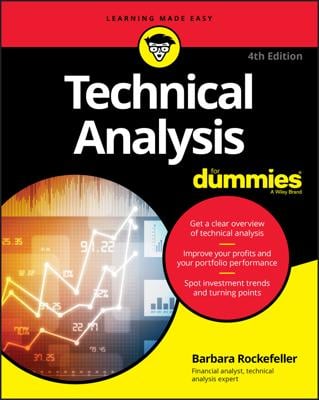Although technical analysis is the “star,” it does have its shortcomings as an analytical tool for stock investors. The major drawback of technical analysis is that it’s a human approach that tracks human behavior in a particular market. In other words, just because it’s called technical analysis doesn’t mean that it’s technical à la the laws of physics.
It’s called technical analysis because the data you look at is technical. But the movement of the price of the underlying stock or investment is due to the cumulative decisions of many buyers and sellers who are human — and therefore fallible.
Why mention this? Everyone is looking to make money, and many trading systems and approaches are based on technical analysis. Unfortunately, making profitable investments isn’t a matter of 2 + 2 = 4. If technical analysis made things so easy that mere computer models or trading systems could give you a voilà-moneymaking decision, everyone could — and would — do it. Yet, that’s not the case.
Fundamental analysis is great for long-term investing. Technical analysis is not great for choosing individual stocks. Long-term investors don’t have to bother with things such as triangles, pennants, cup-and-handles, or other paraphernalia. Long-term investors just ask questions like “Is the company making money?” or “Are financial and economic conditions still favorable for my investment?”
When the fundamentals are in your favor, any short-term move against you is a buying opportunity (provided that you choose wisely from the start). But unfortunately, too many investors aren’t patient, and they get too busy with the short-term trees to be bothered by the long-term forest. Yet that long-term forest has a lot more green.
The short term is a different animal. It requires more attention and discipline. You need to monitor all the indicators to see whether you’re on track or whether the signals are warning a change in course. The technicals can be bearish one month and bullish the next. Being a proficient technician ultimately requires more monitoring, more trading, and more hedging.
Note that all this activity also means more taxes, more transaction costs (commissions and the like), and more administrative work (tax reporting and so on). After all, who do you think will pay more in taxes: someone who buys and holds for a year or longer or someone who makes the same profit by jumping in and out? Short-term gains don’t have the same favorable rates as long-term gains.
But before you throw out technical analysis with the bath water, read on. Those who use technical analysis in short-term trading or speculating in larger-scope investments tend to do better than those who don’t use it. That means that if you apply technical analysis to something larger than a company, such as an index or a commodity, you’ll tend to do better.
If you’re getting into trading stocks and/or stock-related exchange-traded funds (ETFs), then understanding the basics of technical analysis will make you, overall, a better (and hence more profitable) trader. Because short-term market behavior and psychology can be very mercurial and irrational (human), technical analysis has its usefulness.
It’s most useful for those folks who are trading and/or speculating during a relatively short time frame measured in days, weeks, or months. It isn’t that useful when you’re trying to forecast where a stock’s price will be a year or more down the road.

